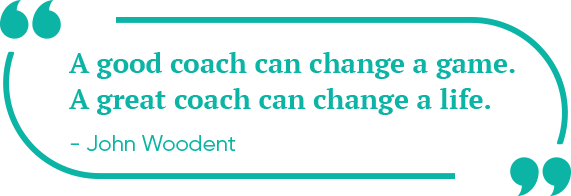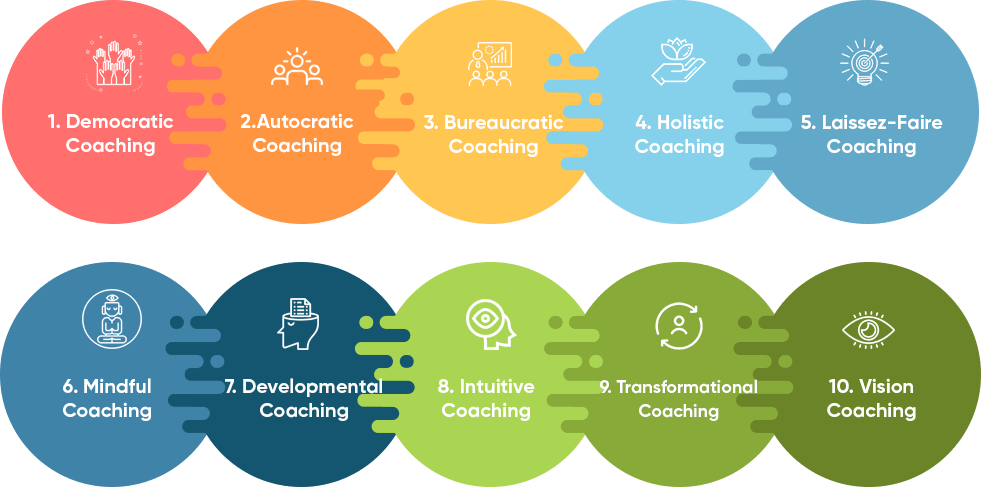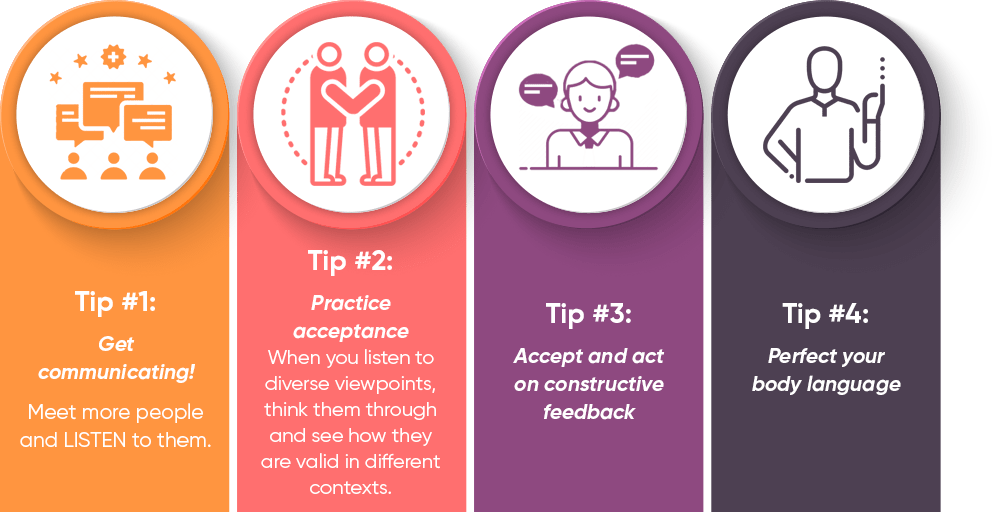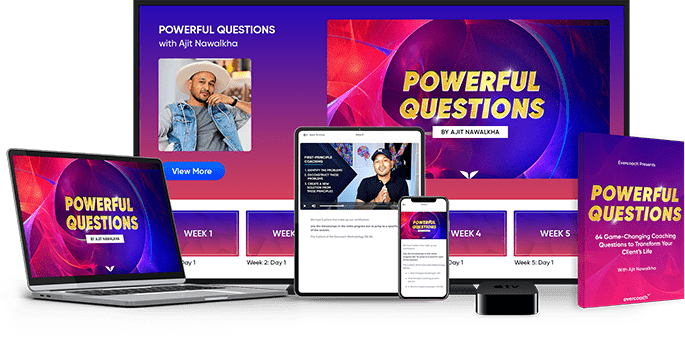The Ultimate Guide To Coaching Styles
How to maximize the effectiveness of your coaching by choosing
the coaching styles that fit you and your clients best.


Yes or No?
If the answer to these questions is YES, then the problem could be your coaching style.
And no, it's not that your coaching style is bad; it's probably not aligned well with your client base.
Does this raise more questions than it answers?
Well, we have for you a tell-all master guide on coaching styles. The 10 most common coaching styles are: democratic coaching, autocratic coaching, intuitive coaching, transformational coaching, holistic coaching, mindful coaching, developmental coaching, laissez-faire coaching, vision coaching, and bureaucratic coaching. This guide will clarify everything you need to know about these different coaching styles and will help you:
Let's get started!
What Are Coaching Styles?
If you've been coaching for some time, you would have noticed that you've developed a coaching style.
A coaching style represents the way you interact with your clients, how you take them through a coaching session, and how you structure your engagement. There are many coaching styles you can test and follow, as you find the one that fits you and your clients best.
Whatever your experience, it's quite possible that your coaching style – your way of working with your clients – is what you are comfortable with and that it might change with time, as you evolve as a human being and a coach.
The question is, "Is this style best suited for what your clients need?"


Different clients may need different coaching styles to achieve the objectives they are looking for or to overcome the obstacles they are facing.
As a coach, it's your responsibility to push yourself out of your comfort zone and deliver on what your client needs. And that applies to your coaching style too.
You need to be able to mix up your coaching style and take on a role that works best for any client, in any given situation.
And yes, there are many different types of coaching styles out there.
As a coach, before you dive into the coaching session with your signature style, you need to:
a) Assess the client's mental and emotional needs
b) Take cues from their behavior and understand what they respond to
c) Adapt your coaching style to best suit their needs
4 Must-Have Coaching Skills

Effective Communication
Great social and communication skills are essential to help your client feel at ease. Once they relax in your company, they will open up a lot more about what works for them. Asking the right questions can also help you get a lot of great insights into your clients' psyche.

Empathy
No one wants to be judged, especially a person coming to you for help. As a coach, the one thing you need most is empathy. You need to be able to understand how they are feeling and how they react to certain cues.

Patience
Coaching isn't a miracle cure. It's a process. You have to work with clients for months and sometimes even years. There will be wins AND setbacks. No matter how slow the process, you need to be patient and keep the space open for the client.

Nimbleness
You need to be quick to shift and adapt the coaching style that your client needs at that moment. For instance, when they need rules and discipline, be more authoritarian. When they need a more relaxed and flexible approach, go democratic.
Now that you know what a coaching style is, let's figure out what are the different coaching styles out there. More on that in the next chapter, but first… a bit of reflection.

Take a moment to journal and answer these questions:
1. Do you feel you have a predominant coaching style? What is it?
2. How well is your coaching style working for your clients?
3. Is there something you feel you can do differently?
What Are The Different Coaching Styles?

As a coach, you'll come across different problems, behavior patterns, and reactions across your client set. Like that last perfect piece in a puzzle, if you are able to fit your coaching style to these unique needs, it can help the client feel more confident about their journey with you.
In this guide, we'll look at ten different coaching styles and how you can use them to work with your clients.


1. Democratic Coaching
Much like what the name indicates, this coaching style follows the same definition and practice of "democracy."
It gives the client leeway to participate actively in the methods and procedure being devised to take them to success. It considers the choices, interests, and responses of the client equally.
As compared to other coaching styles, democratic coaching puts the control more in the hands of the clients while the coach provides the push and support required to deliver the tangible goals.
Often considered the most empowering coaching style, democratic coaching is the best fit for clients who are ready for the responsibility and require lesser hand holding. It's a great fit for financial coaching, career coaching, and personal growth coaching.
2. Autocratic Coaching
Unlike the democratic style, the autocratic coaching style places the authority in the hands of the coach. You firmly lead your client toward the desired results and success.
Autocratic coaching places control with the coach. And it's important that you use this style when you have the necessary experience and expertise to dictate terms.
Often, the autocratic style comes associated with a negative perception. However, it does have its uses. It could be deployed when you have a client who responds best to structure and discipline, and looks to you for guidance.
An autocratic style can commonly be seen in military training, sports/fitness training, or business coaching where structure and specifics are more desirable than flexibility.
3. Bureaucratic Coaching
Close on the heels of the autocratic coaching style is bureaucratic coaching. It follows more of an "old-school" approach and is more driven by process and systems.
This strict, protocol-following, rule-oriented, and often rigid coaching style is ideal for discipline-loving clients. However, before applying this style, you need to be sure of the client-style fit and your experience in the area that you are coaching them on.
It's the best fit for highly regulated environments where there's a protocol already established and no scope for self-destruction.
For instance, in a legal firm or a hospital where deviation from a process could cost a lot of money or even lives. More often than not, bureaucratic coaching is adopted for organizational training in disciplined, regulated set-ups that require a non-negotiable focus on compliance and processes, like government and public-sector kinds of bodies.
4. Holistic Coaching
The Holistic coaching style basically focuses on the overall growth of the person - giving all aspects of the client's life equal importance.
Here, you have to take into consideration the entire client perspective – their place in society, world, their individual goals, and infuse them with confidence, balance, and purpose. It requires you to establish the full coach-client trust to uncover unrevealed desires and goals.
The role of the coach is to ask the right questions and provide support and encouragement. Holistic coaching is best fit in situations where the client is looking to create lasting results in their life as a whole – mind, body, spirit, and community.
This style does not focus on one specific outcome even if the client has one main challenge they want to address. The idea is to take a deep dive into their lives and identify what are the interconnected issues that are creating an imbalance.
Watch this video to see holistic coaching in action:
5. Laissez-Faire Coaching
Laissez-Faire is a French term that translates to "leave alone," literally, "let you do."
Coaching in this style puts the entire control in the hands of your client. Your client has full autonomy on how they want to move towards their goal and they require minimal intervention from the coaching. The role of the coach in this style is more to oversee progress and keep the client focused on the goal.

This is often regarded as the most "ineffective" approach of coaching, but does have its uses in situations where the client knows more about the subject than the coach does. Again, this is often used in organizational settings where the coach comes on board as an external consultant and isn't the "primary process owner."
This style does have its positives. It definitely allows the client to be self-empowered, confident, and realize self-efficacy.
This style does have its positives. It definitely allows the client to be self-empowered, confident, and realize self-efficacy.
6. Mind2ful Coaching
Mindful coaching is a powerful and perhaps the most open-minded style of coaching. It's an exploratory approach that nudges your client to address their thoughts, responses, and emotions in the moment sans judgment or second thoughts. This is a great approach to use when you need to calm the client and address their stress and anxiety.

Coaches who practice mindful coaching help their clients focus their mental and emotional energies to one line of thought without distractions. They help the client move from doing to being. It helps the client achieve new perceptions and breakthroughs and is a great approach to use in executive or leadership coaching.
To use this style, coaches must be mindful themselves. They need to leave judgement at the door when they come to the coaching session and interact with the client with openness, curiosity, and attention.
A great way to get comfortable with this style is by using guided meditations and positive affirmations during the session. Meditation instantly puts the client at peace, develops a sense of trust and reliability, and you can easily steer their mind and intentions to positive outcomes.
7. Developmental Coaching
Developmental coaching involves understanding the 'what', 'why', and 'how' of your client. The coach uses 360 degree feedback and questions to understand the client's past experiences and assess where they are in their development journey. This style takes into account the client's age, mental age, and thought processes.
As a coach using a developmental coaching style, you don't aim to change behavior. Rather, the focus is on identifying the root cause of the problem and bringing about a mindset change. It addresses their long-standing issues into providing the much-needed validation.
8. Intuitive Coaching
Intuitive coaching adopts a more spiritual route where you help your client listen to their innermost thoughts, conscience, and intuitions.
This style helps the clients develop and trust their inner perspectives. This is where you have to help the client identify what they need to find fulfillment and personal satisfaction through introspection.
The role of the coach is to help the client realize their hidden desires, build trust in themselves, and attain clarity of thought.
9. Transformational Coaching
Probably the most liberal coaching style, here there's only one goal: transformation. No hierarchy, no coach authority, no linearity in power.
This is where you have to work and establish a client-coach alliance where both the parties involved know exactly what they are getting into.
Also called life coaching or perspective-change coaching, transformational coaching aids the client in bringing necessary changes to drive positive change. As a coach, you can use this style to build your client's perspective on how they view their life, themselves, their goals, and their methods.
Watch this video to learn how to become a transformational coach:
10. Vision Coaching
Typically, visualizations help you imagine or live a future you envision for yourself. It's like harnessing your power of imagination to decide where you want to be in life.
A coach can use these visualizations - imagery, visuals, imagination - to create a positive influence for their clients. Vision coaching requires a healthy dialogue and the role of the coach is to encourage the client to adopt visualization techniques.
This style is best used in the short-term, but can be highly effective for stressful workplaces, jobs, and people weighed down with responsibilities. It's like a mini-imaginary getaway – offering a peek into a fruitful future!
Now that you know all these different coaching styles…
Do you see yourself leaning towards one or two of them?
Does something ring familiar?
Let's move to the next chapter and figure out what your coaching style needs to be!

Let's find out how well you've understood the different coaching styles and the possible applications of them! Read the following case study and answer the questions below:
Let's say you have a client, Rachel, who is in her early 20's. She's at an important phase in her life. She needs to apply to universities and select her majors that will decide her professional life for some years to come. She is a bright student; however, she isn't able to pin down what she wants to do. She gets different opinions from friends and family, from her teachers, peers, and communities online. And that mix of contrasting opinions is confusing her. She swings from one option to another, and the deadlines for university applications are looming closer. She has now approached you, as a coach, to help her through this phase.

What coaching style would you use for Rachel and why? What additional information do you need to select a coaching style? How would you go about getting that information?
Finding Your Coaching Style
When it comes to coaching, there is no one-size-fits-all approach.
Yes, you need a coaching methodology.
Yes, you need to have a structure.
Yes, you need to have coaching packages.
However, the greatest skill of a good coach is flexibility.
You need to adapt quickly to what your client needs.
You need to assess their response and change your approach.

And that's why it's so important to be able to change the coaching style to deliver on what your client needs.
2 Key Factors To Choose Your Coaching Style
1. Your own comfort with the coaching style
In coaching, you can't (and you should not) fake it. If you are uncomfortable with something, your client will be too. For instance, if you want to introduce the mindful coaching style into your sessions, but you yourself are uncomfortable leading the guided meditations, or with the exploratory, no-agenda nature of the approach, it's not going to work.
So, try out the different styles with a friend or an accountability partner. Figure out your comfort zone. There may be a few styles that you can work with, but you need some practice. Put in that practice. Polish that approach. And then go help your clients!
2. The stage where your client is at and how they are moving towards their goals
You may already have a great coaching style, but if you don't change it to fit what your client needs, you are headed towards failure. Keep in mind, a client’s needs may also change during a coaching engagement, so you need to be nimble and flexible enough to accommodate them.
How To Define What Your Clients Need
Well, have you heard of the Choice Theory by Dr. William Glasser? Dr. Glasser, a world-renowned psychiatrist, came up with this theory. What it says is that all of our behaviors are driven by the motivation to meet five basic needs – power, fun, freedom, belonging, and survival. And while the needs are the same, they may vary in strength and the way we choose to satisfy them are very different.

For example, of two clients who work with a fitness coach, one has a higher need for power and another has a higher need for connection. This makes their motivations differ. The client with the high need for power would be motivated by competition or personal bests and the one with a high need for connection would prefer working out in groups without intending to compete. To get them to their fitness goals, the coach would need to take these preferences and desires into account.
4 Tips To Discover More About Your Clients

Here's a short guide for you to learn more about body language:
Watch this video on how to coach someone you don't know:

Let's do a quick exercise to find out what coaching styles work for you and your clients.
Think about some of your clients – their behaviors, drivers, motivators. Take a moment to consider how you currently work with them. Think about how well that style is working for them.
Now list down a different style (or a mix of 2 styles) that you think could work better and why.
In the next session with these clients, try using a different style and note how they respond to that.
Use the framework below to do this exercise:
Client Profile | Current coaching style | Client response to current style | Style(s) that might be a better fit | Client response to the new style |
|---|---|---|---|---|
Cell | Cell | Cell | Cell | Cell |
Cell | Cell | Cell | Cell | Cell |
Cell | Cell | Cell | Cell | Cell |
Cell | Cell | Cell | Cell | Cell |
Work On Your Coaching Style
It's pretty clear that, to rock your coaching style, you need a deeper understanding of your clients' psyche. We have just the thing for you!
Catalyze Massive Client Breakthroughs, Regardless Of Your Coaching Experience
A practical, 100-page manual featuring the most powerful questions world-class coaches use to catalyze deep and lasting a-ha moments and transformations in their clients.

